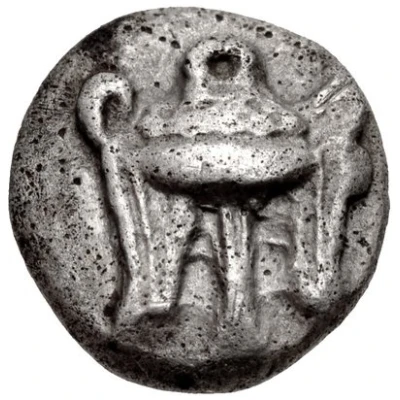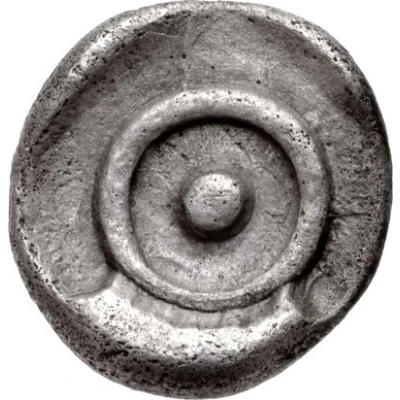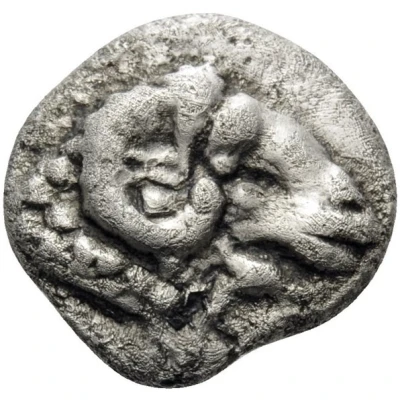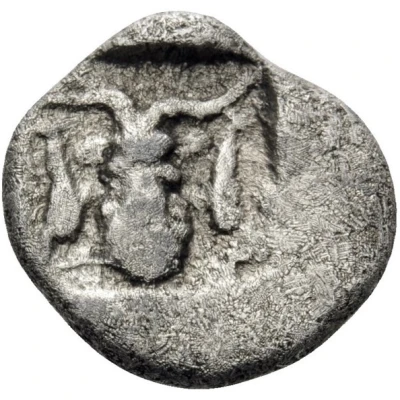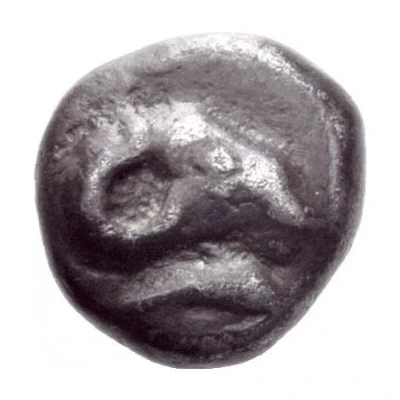
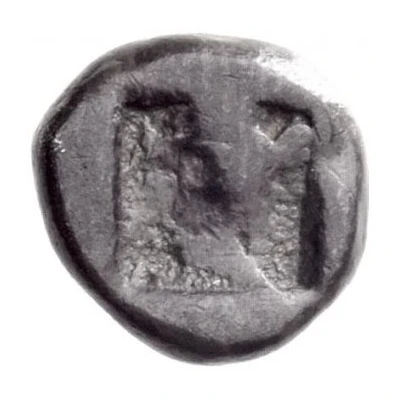

© Numismatica Ars Classica NAC AG
Trihemiobol 525 BC - 500 BC
| Silver | 1.6 g | - |
| Issuer | Delphi (Phokis) |
|---|---|
| Type | Standard circulation coin |
| Years | 525 BC - 500 BC |
| Value | Trihemiobol (¼) |
| Currency | Drachm |
| Composition | Silver |
| Weight | 1.6 g |
| Shape | Round (irregular) |
| Technique | Hammered, Incuse |
| Demonetized | Yes |
| Updated | 2024-10-10 |
| Numista | N#284852 |
|---|---|
| Rarity index | 100% |
Reverse
Irregular die flaws within incuse square.
Comment
Comment from Numismatica Ars Classica NAC AG: "The dolphin on the obverse secures the attribution of this unknown until now trihemiobol as the earliest issue of Delphi. Picard, TOPOI 12 - 13/1 (2005), pp. 62 - 63 quotes and concurs with Kraay, Archaic and Classical Greek Coins (1976), p. 121, on a date that is “before and after 500” for the later fractions with reverse types. The earlier date therefore given here for the type with the incuse square, unknown to the two above authors, should be about right. The ram on the obverse of this early coin could easily be the predecessor to the rams on the obverses of the coins illustrated in Svoronos pl. XXV, 7 - 10, and not by more than a decade or two. See also Svoronos p. 19, 2 and pl. XXV, 6 for the unique Berlin hemiobol of slightly later date with the phiale as reverse type. Its weight (0.53 g.) is also on the high side, as is the weight of this piece. Later, the Delphi mint initiated the policy - as most Greek states did - of striking its fractions “light”. This ensured that they remained in the area rather than being “pilfered” by the neighbouring states to melt and strike their own (underweight) coinages at a profit."Interesting fact
The Trihemiobol coin from Delphi (Phokis) was used as a form of currency in ancient Greece and was equivalent to one-third of an Obol, which was the standard unit of currency at the time.
